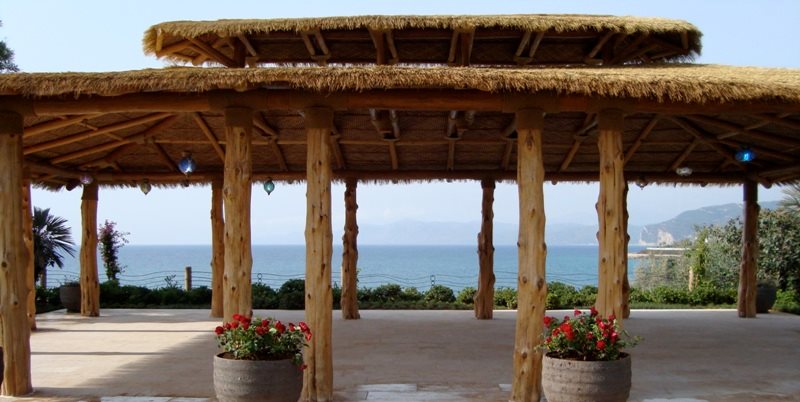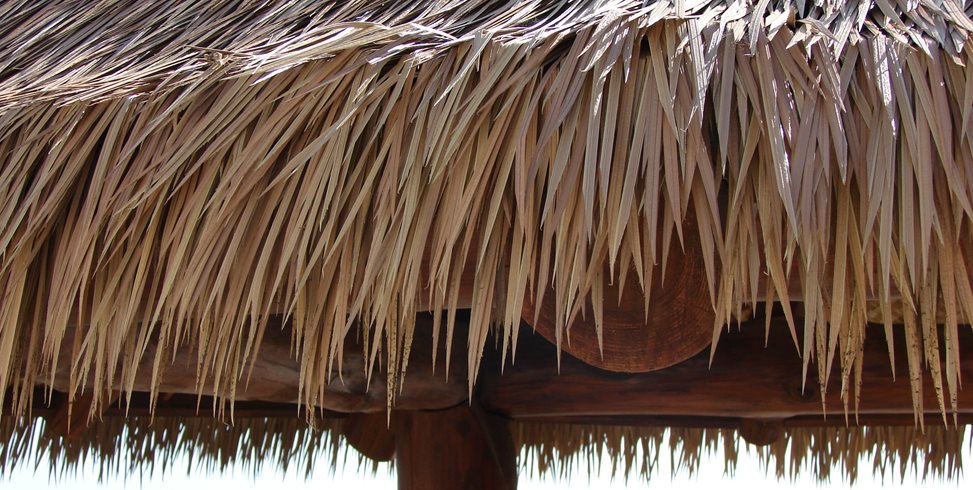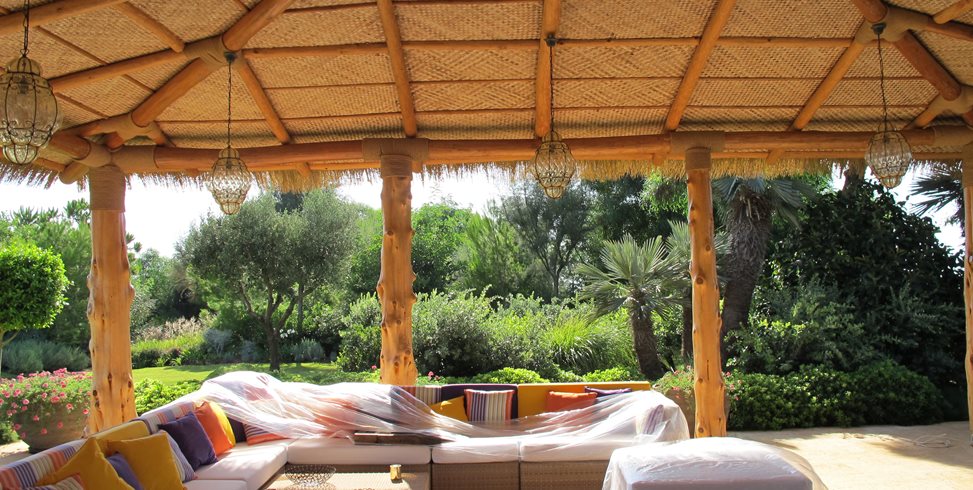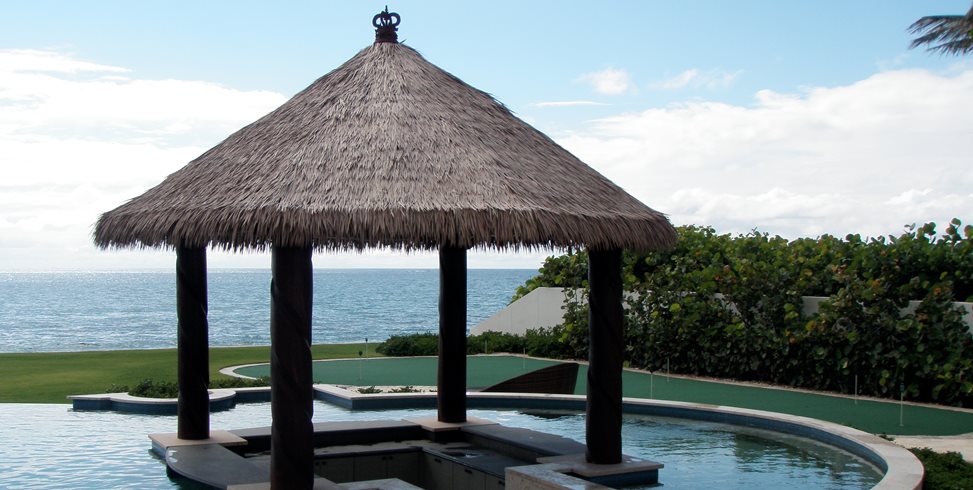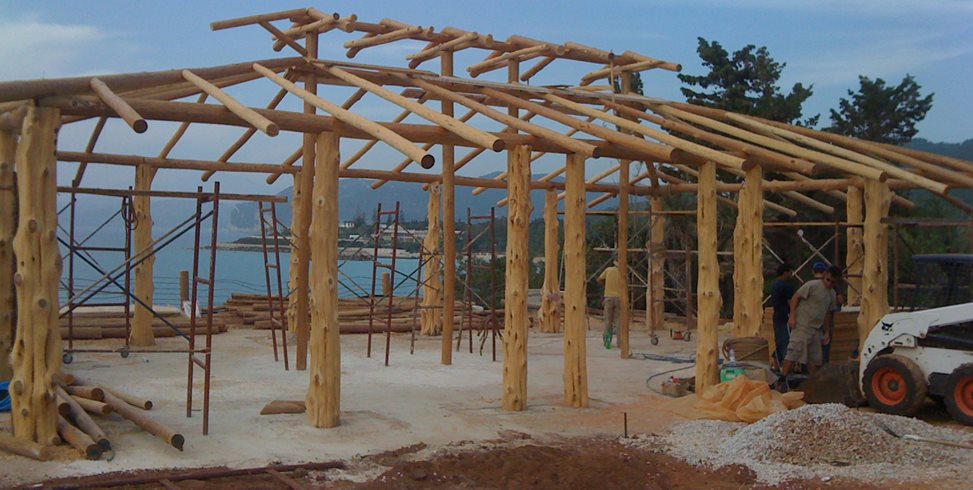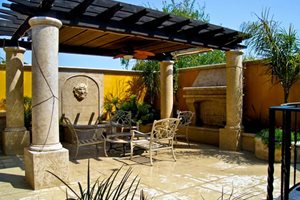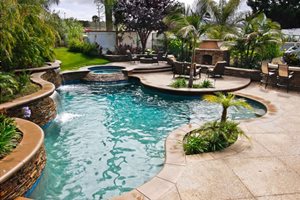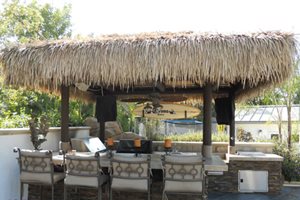Backyard Tiki Huts
Professional advice for designing and installing a tiki hut on your propertyWant to step out your back door and feel like you’ve escaped to a tropical resort? The Tiki Hut Company, specializing in high-end, custom-built thatched tiki huts, helps celebrities, resorts, zoos, restaurants and more create the tropical theme they desire. With experience building palapas on private islands throughout the world, Nick Schrauwen, president of the Tiki Hut Company, has a wealth of expertise on designing and installing thatched structures. Check out his dos and don’ts to learn more about custom tiki huts.
Dos
- Do choose your posts carefully.
They must blend into your house design and landscaping. They can be contemporary (sanded and stained) or can be natural with curves and character to match an aspect of the surroundings. Pressure treated eucalyptus looks nice in a modern setting, while a peeled cedar will provide a more rustic quality. Post selection is as important as the roofing material chosen, because the post and the thatching are the only two materials you will see from the outside. - Do select the roof covering carefully.
Along with post choice, this is one of the most important aspects of palapa construction. Again, the thatch used must match its surroundings. If close to your house, then try to match the roof of your tiki hut to the roof of the house. If separated from the house by a pool or landscaping then you can choose an alternative roof covering that is neat or shaggy. This is usually a personal choice and neither is wrong. If you have chosen a palapa because you want to escape to the islands in, then shaggy thatch is best. Mexican rain cape is popular for the island effect. If a contemporary look is preferred then various options for a neat look are available. - Do consider your climate.
Natural thatch and synthetic thatch must both be looked at. Natural thatch does not do well on a roof that is too shallow, has poor ventilation or is in a humid climate. A dry, hot and windy climate is best for natural thatch. Keep in mind that natural thatch does produce small pieces of debris that may need to be pressure washed from the roof and then swept or blown from the pool deck. On the other hand, synthetic thatch requires much less maintenance, but it does have two draw backs in that it is expensive in the short term and is not always as aesthetically pleasing as natural thatch. There are aesthetic advancements being made in synthetic thatch products and we are getting closer to the natural thatch look every year. - Do plan out the area inside your hut.
If you want the hut for dining, then a table with chairs must be able to fit in comfortably. The general rule of thumb is to allow 3' square for a chair. So if you have rectangular table with 6 chairs then the space required in your hut, between posts, must be at least 12x9, with a 3' wide table.
Don'ts
- Don't use natural thatch over or near a pool.
During the life of the hut most of the natural material will degrade and break off and fall into your pool, making cleaning the pool an everyday occurrence. If you want your hut near the pool choose a thatch that does not require a lot of clean up. We’ve found that this is usually a synthetic thatch. - Don't use soft or untreated wood for ground burial posts.
You don't want a beautiful tiki hut to have its life cut short by poles that are too weak to support it. To prevent this, select a wood designed for ground burial or make sure the posts have been properly treated or covered before they are set in the ground. Posts should be installed so that water sheds away from them, preventing any moisture from entering cracks. It is best to seal the space between the posts and the concrete footing with an expansive joint sealer. - Don't install thatch before electrical wiring.
You want to hide electrical conduits in the roof structure and this is best done once roof framing is completed. After the electrical is complete then the subroof and thatch can be installed. Positioning of lighting and electrical outlets (for fan, television, extra lighting, tiki signs, etc.) is critical to ensure the palapa does not have wires and outlets visible. - Don't install paving or pool deck before the posts.
It’s best to cut paving materials around posts to give a finished look. If the tiki hut is an addition and there is an existing deck, then we advise the specific posts (poles must be on site and allocated to each position) be used to cut into the deck. Remember to use joint sealer between posts and paving to prevent the ingress of water. This is necessary because the post and the pool deck have different expansion rates which can lead to cracks.
The Tiki Hut Company
Santa Ana, CA

 Backyards
Backyards
 Front Yards
Front Yards
